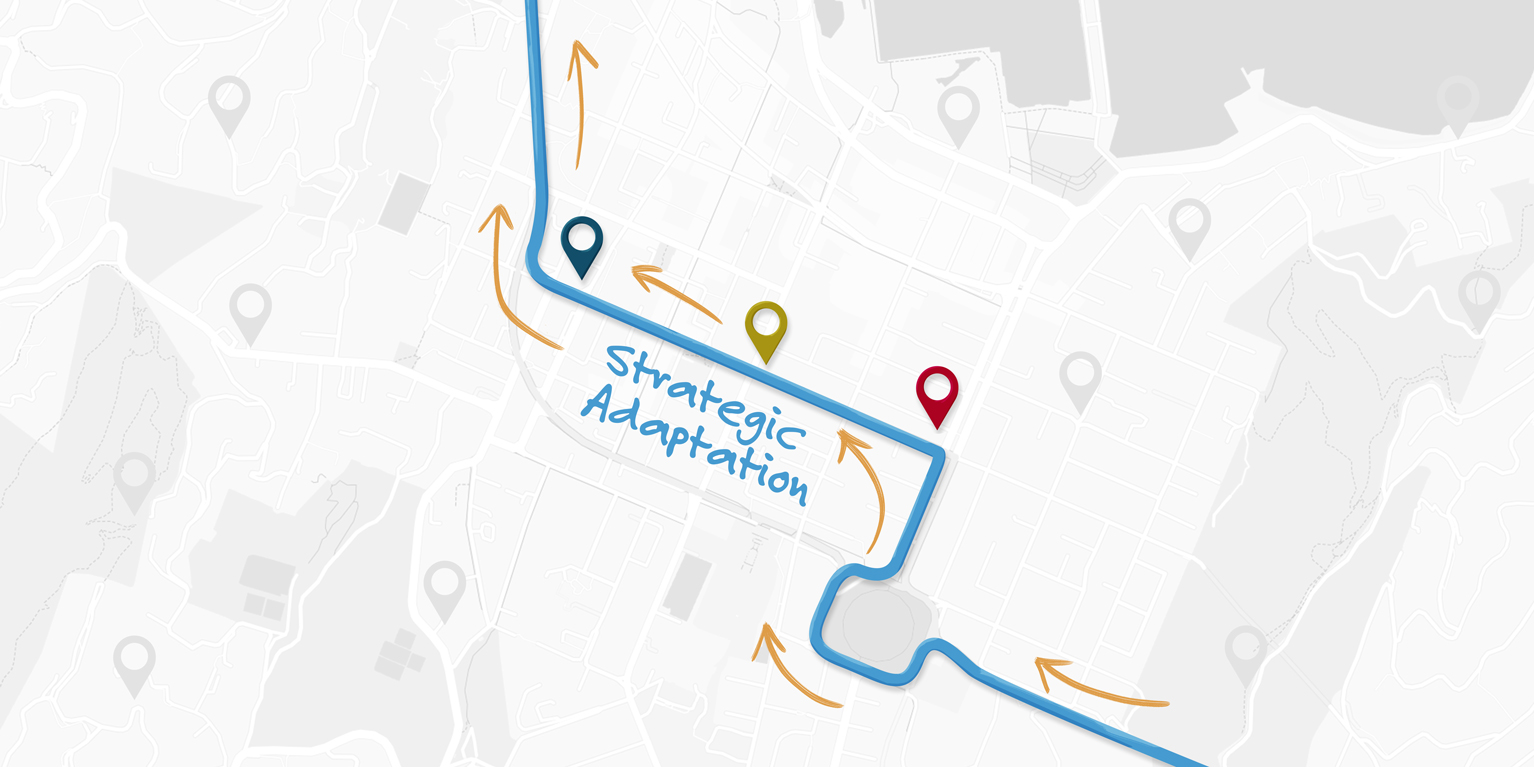Roadmap to Achieving Strategic Adaptation
The strategic planning trend
Toward the end of 2020 we analyzed some StrategyBlocks usage trends which gave us a glimpse into the frequency of strategic planning cycles. There was a strong indicator that the cycle of strategic renewal was gathering pace. That means the way we map out the course by which our organizations are taking to succeed is changing, and rapidly. From our 2020 analysis, it showed that 2021 would be the first year that a typical business would formally refresh their strategic ambitions on a sub annual basis which we discussed in a previous article: The Evolution of Strategy – A 2020 Reboot.
People not industry
It is also interesting to note that this evolution in strategic business planning is not seemingly aligned with any vertical industry–it seems to be more a characteristic of executive leadership style and organizational transparency. Both key characteristics of transformational leadership rather than transactional management. However, this is not a transformational switch the CEO can flick, because simply calling an additional semi-annual review of the strategic plan is not a viable long-term answer. This is a complex strategic problem, and it requires a different approach.
Professor David Collis describes it better than I can in his recent HBR article “Why do so many strategies fail?”.
“Strategic adaptation must become an ongoing, iterative process of hypothesis, experimentation, learning, and action”.
The 5 key changes to strategic thinking
- Foster bottom-up and top-down innovation
HBR goes on to say that attention often turns to capturing markets rather than creating value and it is traditional strategic frameworks that take senior business leaders down this path. I believe innovative value creating ideas can occur anywhere in an organization (from the top-down and just as importantly the bottom-up). What is needed is an agile mechanism to capture these flashes of insight. The strategic plan therefore must be dynamic and malleable.
- Embrace dynamism
Having a malleable strategic plan that can adapt, requires a change in thinking. It needs a culture and processes that will support this agile cyclical approach to strategy; first, an idea is formulated (the process of ideation), then it is actioned (executed) and tested, which uncovers what worked and more importantly what didn’t. The plan can then be adapted, executed again, and monitored.
- Link outputs and outcomes
Actioning new ideas and assessing their success and contribution is a key concept. This act of monitoring performance requires a clear linkage between output (an actionable specific idea) and its corresponding outcome (a measurable assessment of success). This formalizes the relationship between action and learning.
- Provide transparency and clarity
This cyclical approach requires involvement from all personnel. Strategy is no longer solely the domain of the executive team–there is no time for that–so innovative thinking will often be driven by the learnings from real working conditions by those directly involved. Therefore, the team as a whole needs clear visibility of the plan, presented in real-time, showing exactly their role within it.
- Embedded both hard and soft strategic systems
These first 4 changes are all about doing and measuring. They are the hard strategic systems. Organizational culture can shape the development of its leadership, therefore providing an environment which allows adaptation to flourish. However, these soft strategic systems (culture, terminology, values) are often ignored and misunderstood: the culture of an organization must be intrinsically tied to its strategy.
We would value the opportunity to show you what StrategyBlocks can do to enable adaptable strategic execution. If you wish to learn more and see the platform, please book a time. We would enjoy the opportunity to discuss your strategic plan.




Leave A Comment